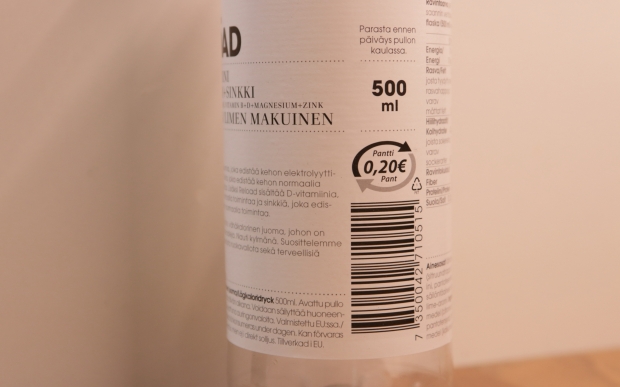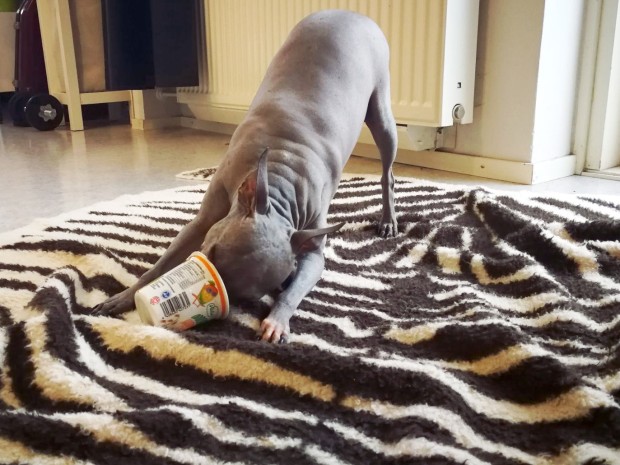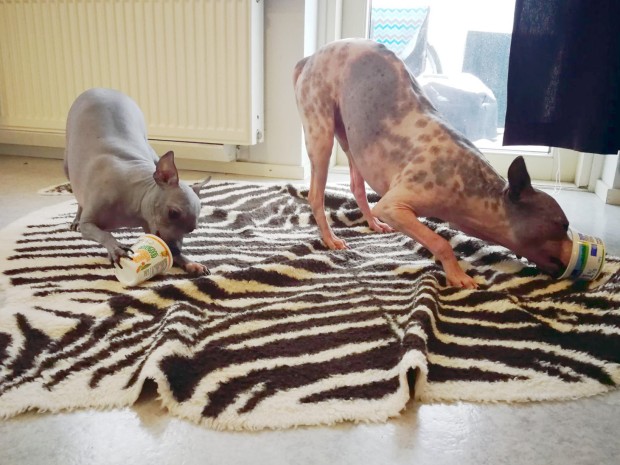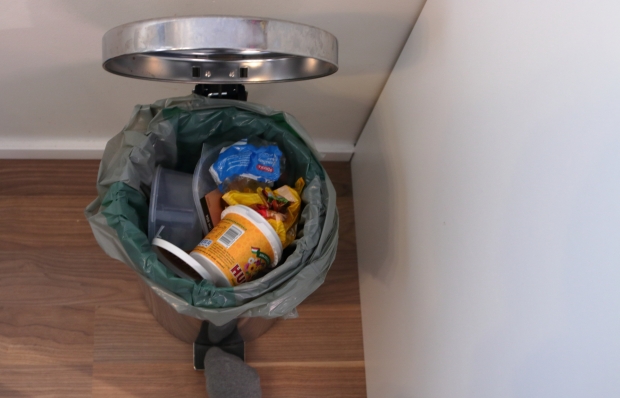Here are some not-so-fun facts about plastic:
- we produce 300 million tons of plastic each year, and half of that plastic is only used once
- the average plastic bag is only used for 15 minutes
- 14% of all litter comes from beverage containers – and making a plastic bottle requires about six times more water than actually fits in the bottle.
- every minute one garbage truck of plastic is dumped into oceans – 32% of all plastic packaging ends up in oceans
- only 14% of plastic is recycled, and only 2% is reused as packaging
Sources:
https://www.plasticoceans.org/the-facts/
https://www.weforum.org/agenda/2016/10/every-minute-one-garbage-truck-of-plastic-is-dumped-into-our-oceans/
I could go on, but I think you already get the point that something has to be done about all this plastic waste.
The very first thing we should do is reduce the amount of plastic we use. There are a lot of easy steps you can take to avoid plastic: while shopping, try to choose the option without plastic packaging, reuse bags for vegetables and fruits, reuse the plastic you already have – use plastic bags multiple times, ending with using them as bin bags, and use old containers again. There’s all sorts of things you can do, but I’ll leave that for another post (or just let you read tips from zerowasters).
One plastic-free alternative that I really like are Bee’s Wraps. They’re a sustainable, reusable alternative to plastic wrap (which is normally single-use, and also a pain because it clings to itself before you can even wrap it around the food you want to preserve!).
I applaud everyone who is living a zerowaste lifestyle, but it is difficult to go fully plastic-free and especially with some food products, there might not even be a plastic-free option, so I for one am so truly grateful that I live in a county with plastic recycling! Each piece of plastic you recycle is one less piece that has to be produced from scratch, thus reducing the amount of plastic that has to be made and brought into this world. Plastic recycling is quite new in Finland – we’ve only had it since 2016 – so not that many people know about it, or at least haven’t developed it into a habit yet. That’s why I want to write this post and help those that haven’t found the joys of recycling plastic yet! (Yes, I’m still writing in English though these instructions are for Finns, that’s just what I do… and also, now internationals in Finland can find easy instructions as well! I’ll add quick instructions in Finnish at the end too.)
- Make space for your plastic waste
Since you will be having a new type of waste, you will need a new bin for it. But if you’re already recycling paper, cardboard, metal, glass, and biowaste (as most Finns do), then your bin for unrecyclable waste will actually be quite empty after you start recycling plastic. At least in our home most of our waste is plastic waste, so we don’t have much mixed waste anymore. If this is the case for you as well, I recommend using the bin you used to use for mixed waste as your bin for plastics (and put a small bin somewhere for your unrecyclables). Otherwise, just find a place for an extra bin somewhere convenient.
- Know what plastics you can recycle
In Finland, you can recycle pretty much all plastic packaging. So you can recycle your shampoo bottles, plastic bags, plastic wrapping, pretty much all the plastic your food comes in etc. Other plastic products, like toys or Tupperware, cannot be recycled with packaging plastics. These types then go to mixed waste, where they will be burned (except in the case of Tupperware, you can return your broken containers to Tupperware, and they take care of recycling). PVC plastic can also not be recycled, but that’s rarely used in packaging anyway! For a more thorough list of what you can recycle, check Rinki’s website: https://rinkiin.fi/kotitalouksille/lajitteluohjeet/ .

Fun fact for people who live in countries without bottle recycling: Finnish people only recycle half a kilo of plastic per person, but we recycle 90% of our bottles! For years already, Finland has had a system where for each beverage container – be it plastic, glass or aluminium – you pay a small deposit (15-40 cents), and when you return the container to a recycling point (found in pretty much every grocery store in Finland) you get the deposit back. That’s why if you’re out somewhere where there are a lot of people (drinking) you will also see people walking around with bags, collecting bottles and cans – when they return these bottles and cans, they get the deposits, which can add up to big sums. It was a bit embarrassing when my husband would collect everyone’s bottles back when he was a teenager, and he’d have huge bags of them – but once he got almost 100 euros when we returned them! This system should really be in use in all countries.
- Wash your plastics
All plastic packages you want to recycle have to be emptied, washed, and dried. There shouldn’t be anything other than plastic in your recycling, so there can’t be any food or other products left in the packages. This may sound like a lot of work, but it isn’t. Some outer packaging might not need cleaning at all, and a lot of packaging only needs a small rinse or wipe. If there’s packaging that’s really difficult to clean, it might actually be better to put it in mixed waste – if you need to use warm water and soap to wash it, it may be more energy efficient to have it put to make energy with mixed waste.

Life hack: if you have dogs, they will be thrilled to help you out with cleaning up your food packages. My sister’s dogs were happy to model for these photos and show other dogs how this can be done.

- Separate lids and different plastics from each other
The plastics are recycled automatically, with some sort of optical magic (I have no idea how that works, people are amazing for coming up with stuff like this), so if you have a package that is one type of plastic, with a lid with a different type of plastic, the machine will only recognise one of them and the recycling process will not work as well. Different types of plastics don’t mix too well, so when they make new products, mixed plastics will not be as durable as properly recycled ones. So take off the lids off your packages, and avoid putting different types of containers inside one another.

Writing a blog post about how you recycle your trash isn’t the most aesthetically pleasing of topics, but here you go, here’s a picture of our beautifully clean plastic waste.
- Take your plastics to the nearest recycling spot
You can check the recycling spot closest and most convenient for you here https://rinkiin.fi/kotitalouksille/rinki-ekopisteet/. More and more spots keep coming, so if there isn’t one very near you now, there probably will be soon! Many of the recycling spots are close to big shops, so it’s quite likely you go near one often enough anyway. You don’t need to take out your plastic waste that often, by the way: since you have to wash the packages, they don’t stink, so you can take out the recycling when it’s convenient for you.
- Enjoy living in a world with less plastic waste and seeing your old plastics being reused
The plastic recycling system in Finland is still taking baby steps, so there aren’t many products you will find yet using your old household plastic. But you should have seen my excitement when I first saw plastic bags which said they’re made out of recycled plastic from Finnish homes. It’s real, they really do use it! I can’t wait to see what they come up with in the future, before we find sustainable ways to live completely plastic free!
Muovin kierrätyksen pikaohjeet suomeksi
- Tee tilaa muovijätteelle
Muoville ei välttämättä tarvitse uutta roskakoria, koska jos lajittelet jo muut jätteet, sekajätteisiin jää itseasiassa vain vähän roskaa. Suosittelen käyttämään vanhaa sekajäteastiaa muoveille, jolloin voit hankkia jonkun pienen roska-astian sekajätteille.
- Selvitä, mitä muovia voi kierrättää
Käytännössä muovin kierrätys koskee pakkausmuovia, eli esimerkiksi ruokakaupasta tuleva muovijäte menee todennäköisesti muovin kierrätykseen. Kovat muovit, kuten lelut tai vanhat Tupperware-purkit, eivät mene muovin kierrätykseen.
- Pese muovit
Muovin kierrätykseen voi laittaa ainoastaan puhdasta muovijätettä, eli huuhtele tai pyyhi muoviroskat puhtaiksi. Älä huoli, tämä ei oikeasti ole niin aikaavievää kuin miltä kuulostaa! Iso osa muoviroskasta on jo melko puhdasta, eikä välttämättä kaipaa puhdistusta, tai pelkkä nopea huuhtelu riittää.
- Erottele kannet purkeista.
Kierrätyksessä pitäisi erotella eri muovilaadut toisistaan, jotta kierätetty tuote olisi mahdollisimman laadukas ja kestävä. Käytännössä tämä tarkoittaa sitä, että purkeista pitäisi irroittaa kannet ja korkit ennen kierrätystä ja erilaisia purkkeja ei saisi laittaa sisäkkäin.
- Etsi lähin kierrätyspiste
Pisteet löydät täältä: https://rinkiin.fi/kotitalouksille/rinki-ekopisteet/.
- Nauti maailmasta, jossa on vähemmän muovijätettä ja löydät omista vanhoista muoveistasi tehtyjä tuotteita.
